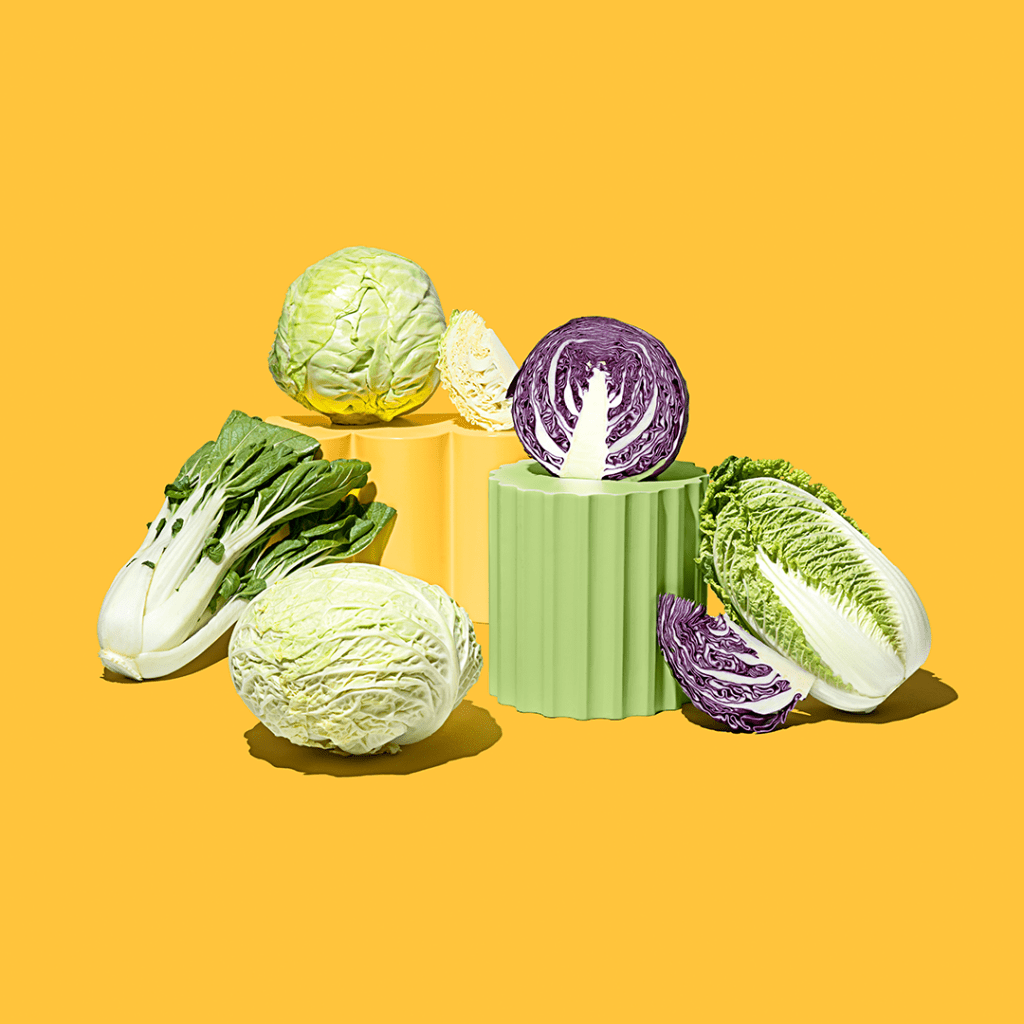
Creamy coleslaw or a standard braise—there doesn’t seem to be much in-between when it comes to cooking up cabbage. But this humble brassica deserves a spot on your plate more often. Its thick, crunchy leaves add texture to vibrant summer salads, or some much-needed heft and sweetness to weeknight stir-fries. (Those dense leaves can take the heat!) Cabbage leaves can also be pickled, and don’t forget the magic that fermentation works in sauerkraut and kimchi.
New to the wonders of cabbage? Rather than try to mask it as a stand-in for something else (say, leafy greens), you’re better off letting it shine on its own. Read on for our full cabbage guide that’s full of tips for picking the right variety for recipes that make the most of this affordable, underappreciated veg.
Green Cabbage
When most people picture cabbage, it’s likely this green, globe-shaped variety comes to mind. Its smooth, outer crunchy leaves can be pretty thick, which is why they’re commonly shredded first, then slathered in a creamy dressing (hello, coleslaw!). However, green cabbage is equally as delicious when fermented into sauerkraut or sautéed low and slow.
Red Cabbage
Red cabbage can typically be used as a substitute for green cabbage because of its similar flavor, though its dark reddish-purple leaves can have a subtle earthiness that makes this variety perfect for cooking. (Braised red cabbage is a good place to start.) Bonus points: its deep color means it’s packed with vitamins and antioxidants.
Get organic produce delivered with Misfits Market
Savoy Cabbage
The round Savoy cabbage has crinkly, deep green (and sometimes purple) leaves that are tender, mild, and earthy, making it the perfect variety to enjoy raw. Sub it as the leafy base in salads, lightly sauté it in olive oil and garlic (much like you would Tuscan kale), or try using one of the large outer leaves in place of butterhead lettuce “cups,” filled to the brim with your favorite fixings.
Napa Cabbage
Also called Chinese cabbage, this oblong-shaped variety looks a little bit like romaine lettuce but when compared to the “standard” green cabbage, the Napa’s flavor is much milder and slightly sweet. We like it added to stir-fries—it softens up nicely in heat—or as the base for homemade kimchi.
Bok Choy
Bok choy is made of crisp stems and tender leaves that are incredibly mild with just a hint of grassy notes. While it might belong in the cabbage family, bok choy tastes similar to baby spinach or Swiss chard—with some serious crunch. Slice a whole head in half, season, and sear with olive oil, garlic, fresh ginger, and soy sauce for a simple side. It can handle those strong flavors.
Brussels Sprouts
Most people think these look and taste like small cabbages, and they’re not wrong—Brussels sprouts are part of the cabbage family after all. They feature the same tightly-packed leaves and fragrant taste, though they aren’t simply baby cabbages. Try Brussels roasted, fried, or thinly shaved and added into salads.
Bonus! What’s the difference between lettuce and cabbage?
Despite looking the same (large heads with tightly packed leaves), cabbage is not quite like lettuce. The biggest difference is in texture: Cabbage leaves tend to be tougher, thicker, and hardier, due to containing less water than lettuce. Iceberg lettuce is super crisp, thanks to its high water content, with a mild grassy flavor.
